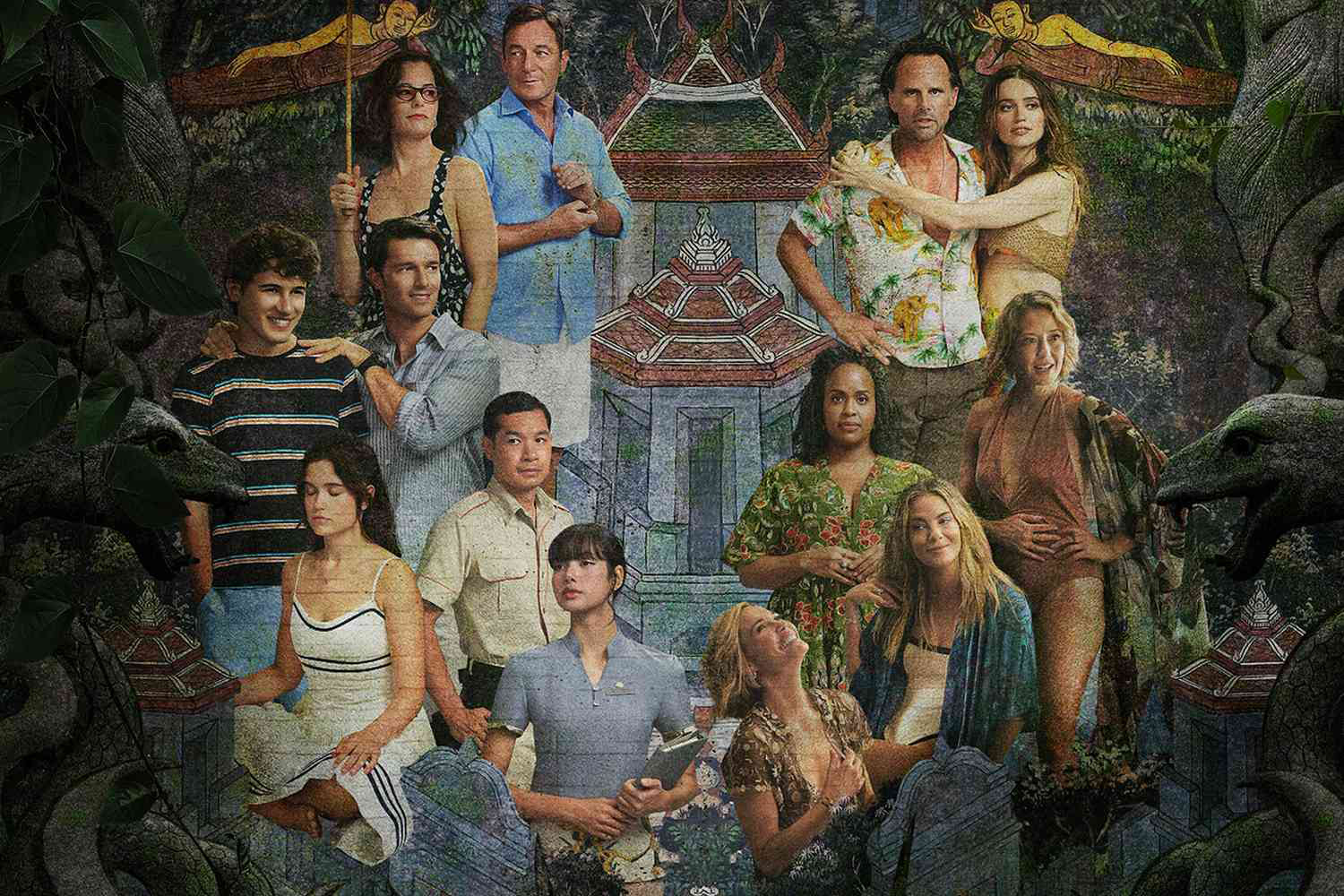By Ellie Trinkle
Warning: This review may contain spoilers of the show “White Lotus” for those have not seen the series, or its most recent season.
HBO’s hit series “White Lotus” has captured the attention of audiences worldwide with its stunning visuals, class commentary, and dynamic soundtrack. Season 3, whose finale premiered this past Sunday, is no exception. Creator and director Mike White continues to keep audiences on their toes, and while there was a noticeably slower pacing throughout this season, the finale brought everything together, revealing how quickly power can shift when other people begin to take hold of it.
Fans of the show know the structure of “The White Lotus” has stayed relatively consistent across seasons; groups of upper-class white people come to stay at an exclusive resort, and throughout their week-long vacation, their security in their wealth and identities are put into question. Last season, White took viewers to Sicily, Italy, to explore themes of sex, exploitation, and betrayal. In the finale of Season 2, Tanya McQuoid (Jennifer Coolidge) fatally died when she jumped off a boat in an attempted escape, crediting White with a successful upping of the ante from the previous season. For White, this new “White Lotus” season left an audience wondering what he could do to top the last season.
Though slower in pacing, Season 3 provides a tantalizing portrait of how money and power are tools that reinforce abuse, displacement, and manipulation, as well as how they cause physical and metaphorical deaths. This season is set at a White Lotus Resort in Thailand that focuses on wellness. Working at the resort are general manager Fabian (Christian Friedel) and security guard Gaitok (Tayme Thapthimthong), whose crush on coworker Mook (Lalisa Manobal) will force him to reexamine how he exercises power. Sritala (Lek Patravadi) is a retired entertainer now the head of the resort, and her American husband Jim Hollinger (Scott Glenn) may be suspiciously tied to one of the guests.
Staying at the resort, we have the Ratliffs—father Timothy (Jason Isaacs), mother Victoria (Parker Posey), oldest son Saxon (Patrick Schwarzenegger), daughter Piper (Sarah Catherine Hook), and youngest son Lochlan (Sam Nivola)—a family from North Carolina who seemingly “have it all.” But, in typical “The White Lotus” fashion, we soon learn that this is far from the truth; Timothy is secretly coping with financial ruin, Victoria cannot imagine a life without wealth, Saxon is obnoxious, Piper wants to be as far away from her family as possible, and Lochlan just wants to keep everyone together. By the end of the season, each member of the family has been forced to reconcile with their status and overall identity.
Childhood friends Jaclyn (Michelle Monaghan), Kate (Leslie Bibb), and Laure (Carrie Coon) blissful reunion begins to unravel as they begin to learn more about one another’s complex adult lifestyles. The three women also befriend health manager Valentin (Arnas Fedaravičius), whose lines between business and pleasure are continuously blurred.
There’s Chelsea (Aimee Lou Wood), whose overly optimistic outlook appears to clash with her older boyfriend Rick’s (Walton Goggins) standoffish demeanor. Rick frequently leaves Chelsea alone, prompting her to befriend Chloe (Charlotte Le Bon), who lives up the hill from the resort with her older husband, Gary (Jon Gries). Only when we meet Gary do we realize he is Greg from seasons 1 and 2. When we last saw Greg, he was leaving his wife Tanya McQuoiud in Italy, only for her to find out he was trying to kill her and inherit her wealth.
Also returning this season is Belinda Lindsey (Natasha Rothwell), who worked in the Hawaii White Lotus in Season 1. Belinda is on a White Lotus exchange program, and when she recognizes Greg, she begins to grow suspicious. Her son Zion (Nicholas Duvernay) also comes to visit and ends up helping her navigate the mysterious and possibly dangerous situation with Greg.
This season differs thematically because it draws inspiration from its location in Thailand. Buddhism parallels the characters’ lack of self-awareness, serving as a warning that greed can be disillusioning and karma always comes back around. Though a few characters claim to be aligned with their spirituality, we slowly watch them regress when material wealth tempts them.
Another powerful element in this season is water, which is frequently used to symbolize themes of death and rebirth. Some characters start to experience a “rebirth,” or a newfound sense of self, while others experience a “death” of their egos and preconceptions about the world around them.
The finale toys with these ideas, showing some people who die (as per typical “The White Lotus” finales) and others who let parts of their identities “die.” While this may seem more underwhelming compared to the other finales, this one embraced its location and used it as a framework for how we can think about wealth, life, and ourselves. Further, White uses water this season to experiment more with his techniques. Scenes where water becomes its own character, guiding or rejecting the choices being made, are some of the most memorable moments of the entire season.
There is so much more that can be discussed about “The White Lotus” Season 3, but I’ll hold off to avoid spoiling too much for those who have yet to finish/watch the season. This season was slower in pacing and less satisfying in its ending, for my taste, but one thing is abundantly clear; White has asserted his position as a thoughtful filmmaker comfortable with “testing the waters” and he’s here to stay.




